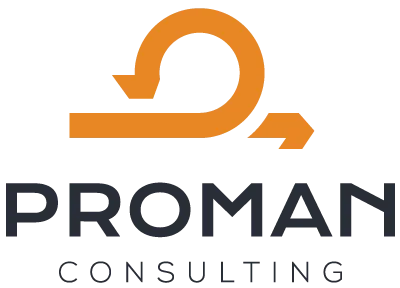Increasing process maturity and developing an integrated process framework
Increasing process maturity and developing an integrated process framework for a complex, international IT service centre
Objectives, executive summary
Client background and environment
Objectives, tasks
- The development of a complete organisational process architecture (also known as a process hierarchy or process taxonomy) for an organisation with a total of 1300 people, of which about 300-400 are external but long-term staff.
- The architecture must cover all the main and sub-processes within the different organisational levels and functions, and clearly identify the people responsible for them (process owners), who will manage their implementation and ensure their operational conditions.
- The architecture should also clearly identify the main, supporting and organisational governance processes, so that each level can be linked to clear roles and responsibilities matrices.
- In cooperation with the Governance, Risk, and Complience (GRC) team, develop policy-level arrangements for the responsibilities and powers of process owners, the content of mandatory documentation, and the requirements for auditing and updating it. The policy should cover:
- The authority and responsibilities of process owners, i.e. what powers process owners have, what their mandatory tasks are in setting up, updating and monitoring processes.
- The mandatory content of the process documentation.
- The update cycle and responsibilities for policies, including how often policies should be reviewed, who is responsible for updates, and in what format and where they should be stored.
- The central availability of processes, where all regulations and process documentation (process descriptions and work instructions) were available to stakeholders, ensuring transparency and continuous availability to the whole organisation.
- Identification, development and implementation of missing organisational processes and their incorporation into a policy according to the process framework.
- Identify and review the processes already used/operated by the organisation and incorporate them into the process framework policy.
- Alignment of processes with international standards and best practices (including ISO standards, NIS2, COBIT, Tisax, ITIL), parent company regulations, local internal regulations and legal compliance.
- Knowledge transfer and training for the contracting organisation. Organising knowledge transfer and training programmes once the processes have been developed.
Challenges, difficulties
- The size of the organisation, its fragmented organisational structure and siloed nature were in themselves a major challenge throughout the project.
- The continuous involvement of external actors (300-400 people) and the regulation of their operations, as the contracting organisation did not have full control over their processes and operations.
- Consultation of stakeholders and the development of a common position was often time-consuming, which delayed meeting internal deadlines.
- A "process blindness" phenomenon. This phenomenon is the lack of E2E (end-to-end) visibility of processes by those involved in the process. Individual implementers are aware of their own tasks, possibly before and after the immediate handover points that affect them, but they do not know or understand the process as a whole and are therefore unable to think about the process in context. In the client's case, the siloed embeddedness magnified this phenomenon in particular, sometimes even leaving blind spots for the management layer when exploring the full functioning of a process.
- The organisation was under constant pressure due to the large number of client projects (i.e. projects for the parent company), which limited the availability of colleagues involved in the project.
- The need for regulation was not clear to all concerned, so there was resistance to change.
- The processes had to comply with a number of international standards, legal requirements and parent company directives and internal regulations, which complicated the documentation.
Implementation of the task
The project adopted an iterative approach, i.e. after defining the main phases and the roadmap, we addressed the challenges of the complex environment by short-term planning and flexible task assignment within each phase, so that the deliverables were achieved in detail, but with continuous handover and client feedback. With representatives from different areas, we continuously collected existing processes, identifying missing elements along the defined objectives. Regular consultations and workshops were held during the project to fine-tune the results based on feedback.
The very first, preparatory phase of the project was to collect and clarify the concepts and terms used in the organisation, as even here there were already very mixed practices. The first step was to collect the terminology used in the different codes and systems, and then to develop consensus but clear and consistent definitions for some of the terms used in the process framework. Redundant, obsolete or contradictory terms have been clarified or removed. Translated with DeepL.com (free version)
The second phase that followed was the development of a process framework to ensure transparency, regularity and delineation of responsibilities between the organisation's processes. The main elements of the framework were the following:
- Organisational regulation, policy development: The first step was the development of a policy that set clear guidelines for the overall operation and maintenance of the process framework. The policy was designed to ensure that all actors clearly understand their roles and responsibilities and that processes operate in a transparent manner within the organisation.
- Defining roles and responsibilities of process owners: The identification of process actors, in particular process owners, was key for monitoring and updating processes. This definition included the designation of the person responsible for each process (process owner), who oversees and ensures the operation of the processes.
- Mandatory content of process documentation: To ensure that processes are modelled, controlled and auditable in a standardised way, we have defined the mandatory content of process and work instruction documents.
- Preparation of sample documentation and a methodological guide: For process documentation, we created sample documents to help process owners easily understand the requirements of regulatory documents. In addition, a methodological guide was prepared which provided detailed instructions on how to prepare process documentation, so that process owners could prepare it independently. To ensure its effectiveness, we have also defined precise review times and update procedures.
- Development of a central repository: To ensure transparency and easy accessibility of process documentation, we created a central repository (an internal SharePoint site) where all process documentation and related regulatory documentation could be found. This repository was digitally accessible to all members of the organisation.
In the third phase, a process architecture was developed, which provided transparency and structure to the organisation's operations. The process architecture was developed through ongoing consultations with the area managers, proposed or already appointed process owners and the various expert teams. At the same time, the standards set by the parent company were taken into account.
First, the organisation's main service-based value streams were identified. The value streams look at the entire journey of a product or service, as opposed to individual processes, and therefore include all processes that add some value to the final customer. The focus in this case was more on optimising the customer experience. Value streams link several processes, the sum of which forms the chain that takes a product or service from the point of demand to the point of sale. The value stream thus examines the interconnectedness of multiple processes as part of a larger system.
In addition to the main value streams, the main organisational management processes and the support processes serving the value streams were identified, and the main and sub-processes of the value streams were then broken down and defined. The architecture has organised these processes in a hierarchical structure, ensuring that all areas are transparent and traceable. After final approval, the process architecture was captured in a visual format, making the relationships between processes clear and delineating responsibilities easier.
In the next, fourth stage, we prioritised the areas based on the architecture that was prepared and approved, and started working with the disciplines according to this prioritisation. First, a mapping and gap analysis was carried out, identifying which processes from the architecture proposals are currently missing in the functioning of the organisation, and which existing but not yet documented processes are currently missing for each area or team. Interviews and workshops were held with process owners and experts to identify and develop the missing processes. These sessions enabled the different business units to jointly develop the necessary processes and to fit them into the organisational structure. On the basis of the interviews and workshops, all existing processes were documented in detail and missing processes were successfully developed and implemented together with the business units.
In the fifth phase, the success of the introduction of new processes and regulations and the smooth running of the business required the availability of appropriate knowledge at all levels of the organisation. Training materials were developed to explain the use of the process architecture, the availability and content of process documentation, and the new roles and responsibilities involved.
Results
The project resulted in a comprehensive process architecture covering all key operational and support activities of the organisation. The new process architecture and regulation not only made operations more transparent, but also improved the quality of internal and external regulatory compliance. By documenting missing processes and reviewing existing processes, the organisation's efficiency and interoperability have been significantly improved. The training materials and the policies put in place helped stakeholders to adapt quickly to the new operational environment, giving the IT service centre a process framework that is sustainable in the long term.

 Designabc
Designabc